It’s Not About You: Godzilla: King of the Monsters and the Legacy of Toho
The Godzilla franchise of films ranges from the serious, ゴジラ Gojira (1954), to the satirical, シン・ゴジラ Shin Gojira (2016), to Godzilla-as-slow-burn, Godzilla (2014), and everything in between. A majority of the films showcase the promise of a climactic fight to the “death” between two of Toho’s kaiju creations. If there is a franchise of films that has continually eschewed the anthropocentric impulse at the heart of human storytelling, Godzilla would be the one. The original film was steeped in the dread of the nuclear age in the wake of Hiroshima and Nagasaki. As creator, Ishirō Honda, stated:
“The theme of the film, from the beginning, was the terror of the bomb. Mankind had created the bomb, and now nature was going to take revenge on mankind.”
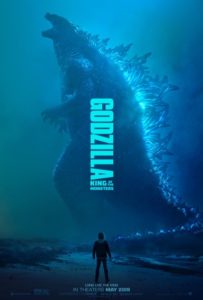 Ever since then, each film has continued the battle against the worst inclinations of humanity. In the terminology of Eugene Thacker, it’s a cinematic representation of the “world-in-itself” attempting to become the “world-without-us.” Not only is humanity destroying other humans, it is doing damage to the “world,” including all living things that populate the environment, above and below. In light of the failure of cultivating creation (in Judeo-Christian terminology), the creation is rebelling against us. The “world” is coming alive to repair the mistakes of humanity and, unfortunately in the case of Godzilla, this means destruction of the structures of man. New natural growth will take its place. The things of nature–kaiju in this instance–will do what it takes to bring balance. Their (nature’s) means do not have an anthropocentric orientation.
Ever since then, each film has continued the battle against the worst inclinations of humanity. In the terminology of Eugene Thacker, it’s a cinematic representation of the “world-in-itself” attempting to become the “world-without-us.” Not only is humanity destroying other humans, it is doing damage to the “world,” including all living things that populate the environment, above and below. In light of the failure of cultivating creation (in Judeo-Christian terminology), the creation is rebelling against us. The “world” is coming alive to repair the mistakes of humanity and, unfortunately in the case of Godzilla, this means destruction of the structures of man. New natural growth will take its place. The things of nature–kaiju in this instance–will do what it takes to bring balance. Their (nature’s) means do not have an anthropocentric orientation.
This is a pointed environmental concern that forms the very foundations of the cinema of Gojira. It just so happens that the ancient kaiju created by Toho are either the manifestation of the earth’s groaning or its literal protectors. The human characters are most prominent in the films when they learn to live in communion with the kaiju, respecting their power and majesty and learning to take care of the environments in which they live. The characters that receive the most screen time in these films are those who seek the environmental balance the kaiju seek instinctually or learn to seek that balance. Those who don’t.become fodder for the terror of the kaiju. In these ways, Godzilla is a truly unique import from Japan to the American shores.
The newest American installment, Godzilla: King of the Monsters, continues this legacy, combining the serious subtext of the franchise, the post-humanist framework, and the awe and wonder of these kaiju from the deep. While I am only a casual fan of the franchise, I came to this film energized because of the talent behind it: Michael Dougherty and Zach Shields. I enjoyed myself significantly in this film–and was entranced by its beautiful cinematography and use of CGI–but it still remains my least favorite film in Dougherty’s filmography behind Trick ‘r Treat and Krampus. The film isn’t perfect by any stretch. Some of the segments of kaiju battles utilize quick-cut editing to the point where the action becomes indecipherable. The characters could be charged with being stock, however when the point of the film is the kaiju, this shouldn’t be a significant mark against it. Even then, I still felt for the characters. (I mean how can you not feel for Coach Taylor?) While the dialogue had significant notes of camp and inconsistent humor throughout, it was no better or worse than the spate of superhero films that are continually praised by critics and the general populace alike.
What it gets right is immersing the audience within a world we are not used to. A world more in line with the popular imaginations of Viking metal where the gods of thunder war for the reign of the heavens and the earth. Mythical creatures battling for supremacy. Within the dialogue between Vera Farmiga and Kyle Chandler we hear that she is helping release the kaiju in order to wash away the tracks of humanity so that, like a wildfire, nature could reemerge and correct the trajectory of our planet’s environmental emergency. The problem is that people will be killed in the process because the kaiju are not like humans, they often seem indifferent to us. Their concerns are more broad in their focus.
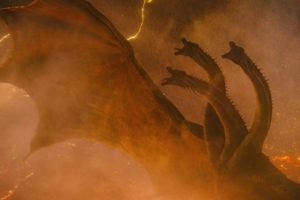 Ghidorah, the film’s premiere villain, is not a kaiju, but an ancient alien that fell like lightning from the skies (sound familiar?) to challenge Godzilla, the king. An eco-terrorist, with the help of Farmiga’s Monarch scientist, frees Ghidorah from his icy bondage along with the other kaiju in order to return balance to the earth in light of humanity’s continued destruction of “their” world. However, Ghidorah, being other, draws the other kaiju to himself for nothing but destruction, not balance. Godzilla must rise again to claim his rightful rule. He is not a tame kaiju after all. He is just as easily friend as he is foe to the wiles of humanity.
Ghidorah, the film’s premiere villain, is not a kaiju, but an ancient alien that fell like lightning from the skies (sound familiar?) to challenge Godzilla, the king. An eco-terrorist, with the help of Farmiga’s Monarch scientist, frees Ghidorah from his icy bondage along with the other kaiju in order to return balance to the earth in light of humanity’s continued destruction of “their” world. However, Ghidorah, being other, draws the other kaiju to himself for nothing but destruction, not balance. Godzilla must rise again to claim his rightful rule. He is not a tame kaiju after all. He is just as easily friend as he is foe to the wiles of humanity.
All of the kaiju, as they battle, are rendered with noticeable love and care. It’s clear that Dougherty and Shields love these characters. They each have a personality that is revealed efficiently within the action of the film. Ghidorah has the bickering heads of something akin to a Ray Harryhausen creation. Rodan squawks and rolls like a fighter jet as he dismantles the attempts of the air force. Mothra rises from her larva in beautiful majesty, full of grace. A literal light descending upon Godzilla towards the end of the film. For whatever flaws the film has, the simple fact that it was capable of transporting me to a place of transcendence and danger was worth the time and money spent alone, but Dougherty and Shields go further with religious subtext.
Christian mythology intertwines with the existing concerns of the franchise which makes for a fascinating reflection on religious stories that have become myopic due to human egos. These allusions are probably the most Western aspect of this iteration. They add more depth to an already deep legacy. Dougherty knows his audience. Americans, whether religious or not, are Christ-haunted. The mythology speaks to everyone on some level even if they do not have faith in it. It’s nice to have familiar Christian allusions come into connection with Godzilla’s prior environmental concerns and broadened narrative framework which combats human myopia. Both are elements that Western Christianity have largely lost in the void of individualism and entitlement.
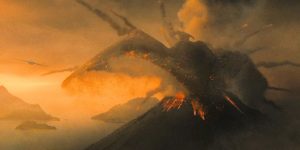 The film currently stands at 40% on Rotten Tomatoes and 49% on Metacritic. Critical appraisal has been all over the place in response to the film. The earliest reviews focused largely on the lack of human story. Since then, the criticism has either been expanded on (via Twitter) and more critical voices have introduced more varied notes of praise and criticism. On the whole, most of the Godzilla franchise lingers in this realm on the aggregator sites with the exception of the original 1954 film (both Japanese and American versions) and Gareth Edwards’s 2014 Godzilla. The reason for the high ratings for the original is understandable, it stands as a new vision for cinema and creates a bridge between the monster films of the 30s and 40s and the paranoia in the science fiction of the 50s.
The film currently stands at 40% on Rotten Tomatoes and 49% on Metacritic. Critical appraisal has been all over the place in response to the film. The earliest reviews focused largely on the lack of human story. Since then, the criticism has either been expanded on (via Twitter) and more critical voices have introduced more varied notes of praise and criticism. On the whole, most of the Godzilla franchise lingers in this realm on the aggregator sites with the exception of the original 1954 film (both Japanese and American versions) and Gareth Edwards’s 2014 Godzilla. The reason for the high ratings for the original is understandable, it stands as a new vision for cinema and creates a bridge between the monster films of the 30s and 40s and the paranoia in the science fiction of the 50s.
However, the praise for the 2014 film is unique. It stands out a bit from the legacy of the Godzilla mythology and the best and worst of fans pointed it out at the time: it seemed more interested in framing the film around the human characters rather than the kaiju. I enjoyed the cinematic qualities of the film, but I remember being less moved by the human stories being told. Godzilla fans lamented the lack of Godzilla in the film. It seems Gareth Edwards took a note from the Spielberg book instead of the Honda book. Build the tension of the human story by teasing the threat, but not giving it away fully until later in the film when you release the tension. Edwards’s Godzilla was effectively Jaws, where the characters are front and center and the monsters are a background threat. The environmental concerns expressed in KOTM (as no one is calling it) are not front and center in Edwards’s film. Humans become the central concern. They are the ones who needs salvation, not the world in which they live. One could say that this film, within the scope of the franchise, is the most Western in form. One could go further to say that this is why the Western critical appraisal was significantly higher for it than it is for this newest iteration–and most of the films in the franchise–since it falls more in line with the legacy of Toho.
While I wouldn’t damn a critic for their opinion–or approve of some of the childish reactions of Godzilla’s fans, I can also understand the complaint that the critical appraisal of this new iteration is judging it as a film it is not trying to be. Maybe there is a delineation between those who understand the lineage of the franchise, its significant thematic notes, and their specific narrative liturgy and those who only have a limited or casual understanding of these films’s makeup and legacy. Considering this is the only major Eastern blockbuster franchise to reach Western shores, I could see there being a subconscious bias against these Eastern narratives. It takes the framing of the film within Western narrative structures to gain critical approval. I definitely see that bias in myself as I spend most of my time watching Western horror while my knowledge of Eastern horror is woefully negligent. I don’t think it’s necessarily an intentional or conscious choice on the part of the critics, but, perhaps, an implicit bias we hold.
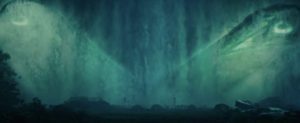 However, Godzilla: King of the Monsters maintains the legacy of the franchise in a way that the 1998 or 2014 do not because of their overtly Western narrative frameworks. It concentrates on the kaiju, first and foremost, while obscuring the human stories in order to broaden the thematic world beyond the human perspective, and it maintains the environmental critique that has been present since the first film. Within the legacy of Toho, the film is everything one could expect.
However, Godzilla: King of the Monsters maintains the legacy of the franchise in a way that the 1998 or 2014 do not because of their overtly Western narrative frameworks. It concentrates on the kaiju, first and foremost, while obscuring the human stories in order to broaden the thematic world beyond the human perspective, and it maintains the environmental critique that has been present since the first film. Within the legacy of Toho, the film is everything one could expect.
This is the art of film criticism, its arbitrary attempt at using language to make sense of beauty, or lack of it. Regardless of whether critics, including myself, loved or hated the film, the one thing that is harder to deny is that it course corrects the franchise back towards the original Toho legacy from more Western narrative frameworks. Your relationship to the Toho legacy will decide whether that was a good or bad move.


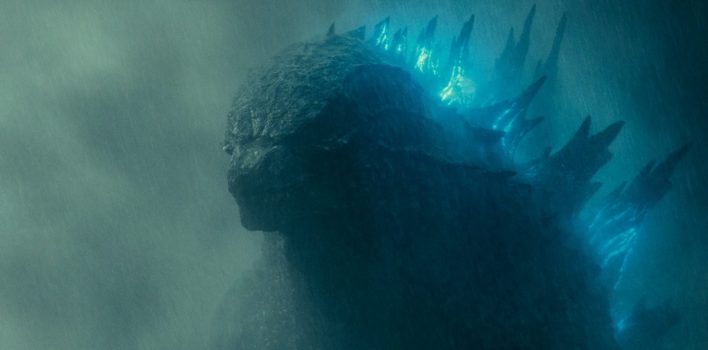
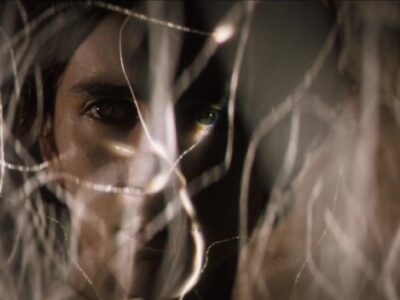
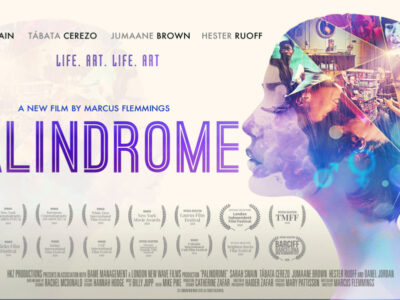
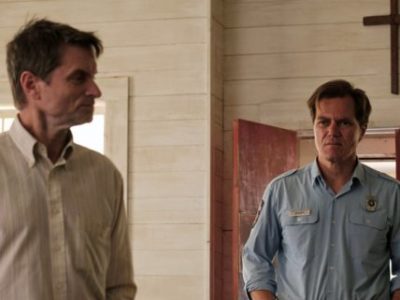


Pingback: #204 – Godzilla: King of the Monsters and Mixed Messaging | Reel World Theology